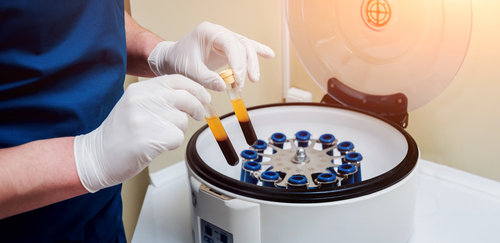
Researchers at Johns Hopkins Bloomberg School of Public Health expect to shortly begin two trials of convalescent plasma – plasma taken from recovered COVID-19 patients – next week, with an eye on reducing hospital strain and helping both high-risk populations and those getting sick at home.
The result of joint efforts on the part of Johns Hopkins University, Bloomberg Philanthropies and the state of Maryland, along with nearly two dozen hospitals and research centers, the trials will be randomized and placebo-controlled, designed to test whether such plasma might be effective as a preventative to the novel coronavirus. The first trial is a prophylaxis clinical trial focused on healthcare workers and other high-risk populations that frequently face major exposure to the virus. The other will enroll those with mild COVID-19 symptoms that have taken to at-home isolation. Both will need to first make sure antibodies exist in donors’ blood.
Beyond its preventative qualities, researchers also want to know if convalescent plasma makes current infectees less likely to develop more serious symptoms.
According to Dr. Arturo Casadevall, chair of the Department of the Molecular Microbiology and Immunology at Johns Hopkins Bloomberg School of Public Health and leader of the project, much of the groundwork – like logistics, U.S. Food and Drug Administration approvals and more – are already completed, providing the researchers with the infrastructure to begin quickly.
But why plasma? Antibodies often emerge in the blood of survivors’ plasma, which can then be given to patients still fighting off disease, lending one person’s hard-fought immunity to another. Casadevall notes that convalescent plasma has been in use for 120 years. While it is unknown for certain if the antibodies in the convalescent plasma will be effective on COVID-19, or for how long, testing it is part of building humanity’s layered defenses, in the doctor’s view.
“Those antibodies stay with you for a short while,” Casadevall said. “They do their job, but just remember, with time you become vulnerable again. You can either get another antibody shot, or hopefully, someday we will have a vaccine.”
If it works, convalescent plasma could buy time for such vaccines. There is also anecdotal data already demonstrating its efficacy. Casadevall pointed to Chinese studies that have suggested the administration of plasma spurred improvement in a small number of patients and to the historical evidence of its efficacy for other diseases. No one has the sort of concrete data that clinical trials provide yet, however, which is where Casadevall’s teams have stepped in. They decided to focus on the outpatient space because many other trials throughout the country are already focused on efforts inside hospitals.
The prophylaxis trial will divide around 150 high-risk workers into two groups: one will get a unit of convalescent plasma, while the other gets plasma sans antibodies. The at-home test will see how far convalescent plasma can go to reduce the strain on the hospital system, using units of plasma as preventatives to keep people from the emergency room – likely more than 1,000 of them, Casadevall estimates.
“We know that most people recover,” Casadevall said. “Most people who are sick are sitting at home, hoping to get better. Unfortunately, some fraction of them get worse and continue to develop symptoms and these symptoms become unbearable and they have to go to the emergency room. The question is: can you intervene at home?”
The trials will be an ongoing process. There is no way for health experts to yet know when real indications of the convalescent plasma’s efficacy will be seen. However, Casadevall believes it will be soon, and he hopes that quality data will continue to inform plasma’s use into the summer, while warning that even a couple months from now, the country will still be very much in the beginnings of the process. Regardless, the lessons learned from COVID-19 convalescent plasma will likely go on to inform better products still, such as gamma globulins, which are administered for the treatment of some viral diseases.




